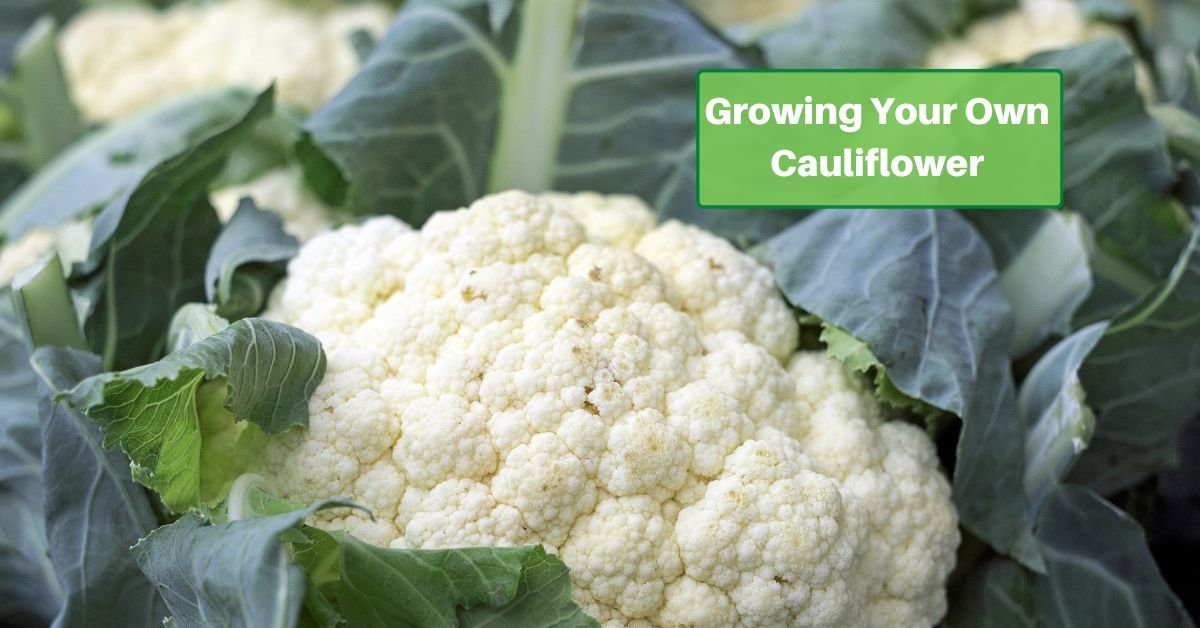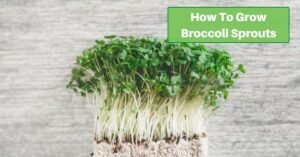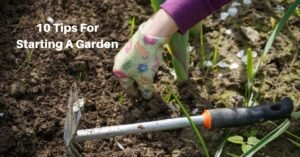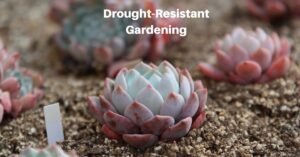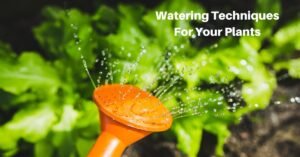Cauliflower, known for its delicate flavor and its place in so many dishes and snacks, can be a great addition to any gardener’s plot. Growing this vegetable may seem challenging, but with the right knowledge and care, you can cultivate it successfully.
In this guide, we’ll explore the art of growing cauliflower and try to cover everything you need to know to bring this vegetable successfully to harvest!
Understanding Timing
Timing plays a key role in achieving cauliflower success. This cool-season crop thrives in specific weather conditions, so it’s important to plant it at the right time.
Typically, cauliflower is grown either in the spring or the fall, depending on your climate and location. It does best when the temperature is between 60 – 65° F (16 – 18° C). The upper limit for its successful growth is around 75° F (24° C).
- Spring Planting: Begin by sowing cauliflower seeds indoors about 6-8 weeks before your region’s last expected frost date. When the seedlings boast 4-6 true leaves and can endure outdoor temperatures, they are ready for transplantation.
- Fall Planting: In areas with mild winters, you can opt for a fall harvest. Plant your seedlings approximately 10-12 weeks before the first anticipated frost date in your locality.
Planting Cauliflower with Care
Selecting the Right Location
Start by choosing a sunny location in your garden with well-draining soil. While cauliflower flourishes in full sun, it can tolerate partial shade.
Preparing the Soil
Properly prepare your soil by incorporating organic matter, such as compost. Maintaining a slightly acidic soil with a pH between 6.5 and 6.8 is ideal for cauliflower growth.
Transplanting Seedlings
Once your seedlings are strong and healthy, transplant them into the garden with a spacing of 18-24 inches between each plant.
Order Cauliflower Seeds Online
Managing Water
Cauliflower requires consistent moisture but should not be waterlogged. Regular and even watering is key to preventing stress and promoting healthy development.
Fertilization
Apply a balanced, slow-release fertilizer during transplanting and again when the cauliflower is about halfway to maturity. Be cautious not to over-fertilize; this can result in excess foliage growth at the expense of cauliflower heads.
Nurturing Your Cauliflower
Successful cauliflower cultivation hinges on maintaining optimal growing conditions:
Thinning
Once your seedlings are established, thin them out to ensure proper spacing, allowing the healthiest, strongest plants to thrive while removing the rest.
Weed Control
Keep the vicinity around your cauliflower plants weed-free, as weeds can compete for nutrients and water.
Mulching
Apply organic mulch around the plants to conserve moisture, regulate soil temperature, and prevent weed growth.
Pest and Disease Management
Keep an eye out for common cauliflower pests such as aphids, cabbage loopers, and cabbage worms. Employ organic methods or insecticidal soap to control infestations. Crop rotation can also reduce the risk of disease.
Blanching
To prevent the cauliflower heads from developing a bitter taste, engage in blanching when the heads reach the size of a ping-pong ball. Gently tie the outer leaves over the head or use specialized cauliflower collars to shield them from direct sunlight.
Maturity and the Art of Harvesting
Cauliflower matures at varying rates depending on the specific variety and environmental conditions.
On average, cauliflower takes approximately 55 to 100 days from transplanting to reach maturity. Keep a watchful eye on your plants, looking for these key indicators to determine when it’s time to harvest:
Head Formation
The cauliflower head should be compact, firm, and reach a desirable size, typically around 6-8 inches in diameter, although this can vary depending on the variety.
White Color
A creamy white color signifies readiness for harvest. Yellowing indicates over-maturity, while a greenish tint may suggest excessive exposure to sunlight.
Tight Curds
The curds, which are the small florets comprising the head, should be densely packed with no separation.
To harvest, employ a sharp knife to cut the cauliflower head from the stem, leaving a few leaves attached. Be careful not to damage the surrounding foliage. Once harvested, cauliflower can be stored in the refrigerator for up to two weeks.
Other Factors To Consider
Crop Rotation
Prevent soil-borne diseases by refraining from planting cauliflower in the same location for consecutive years, and implement a crop rotation strategy to maintain soil health.
Companion Planting
Boost growth and deter pests by planting cauliflower alongside companions such as onions, dill, or celery.
Season Extension
In colder climates, extend the cauliflower-growing season by using row covers or cloches to shield plants from frost.
Succession Planting
Ensure a continuous harvest by staggering cauliflower plantings every few weeks during the appropriate growing season while the temperatures are cool enough.
Saving Seeds
To save cauliflower seeds for future use, allow a few plants to overwinter and bolt (produce flowers), and harvest the seeds when they mature.
Growing cauliflower in your garden can yield fresh, crisp, and flavorful produce for your table. The crop is a little more sensitive to temperature than many others, but by following the steps outlined in this guide and providing the care and attention required, you can ensure a successful cauliflower harvest. Remember that a little investment in time and care can lead to abundant cauliflower crops and a thriving garden ecosystem.

